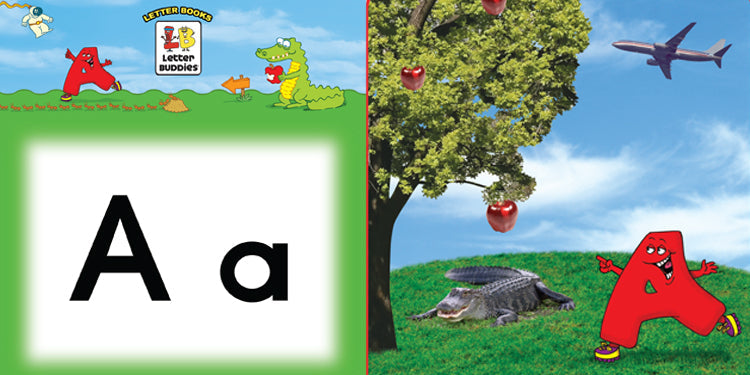
This is the first in a series of three posts on letter learning taken from the Letter Buddies Teacher's guide by Libby Larrabee. Check back later for the next posts in this series!
Letter knowledge is more than just being able to name letters. Letter knowledge includes four interconnected elements. Your children need many opportunities to explore these four elements, both with your guidance as well as independently. These are the four elements of letter knowledge:
-
Letter-Shape Knowledge (letter recognition)
-
Ability to distinguish individual letters by their distinctive features
-
Ability to recognize letters flexibly in various fonts, sizes, cases, and handwriting styles
-
Ability to recognize the features of different letters when they are embedded in text
-
-
Letter-Name Knowledge
-
Understanding that each letter has a name and that two symbols (uppercase and lowercase) represent each letter name
-
Ability to identify letter names quickly
-
- Letter–Sound Knowledge
-

-
Understanding that in written speech, letters (alone and in combination with other letters) represent sounds
-
Ability to identify letter–sound and sound–letter correspondence with speed and accuracy
-
-
Letter Writing Ability (formation)
-
Develops fluent, efficient actions for forming letters
-
Pays attention to details when forming letters
Children need to understand and practice these four elements of letter knowledge as they develop the literacy skills required to read and write sentences.
Letter Buddies materials have been designed to support your letter-knowledge instruction in whole-group, small guided-group, and independent settings. These colorful, engaging materials can be used in a variety of ways, individually or together, to support children as they gain competency in the four elements of letter knowledge.
-
A Note on Letter Formation:
Fluent, efficient actions for forming letters are an important part of a child’s literacy instruction. Research shows that children will learn to form letters more quickly if three lobes of the brain are engaged simultaneously:
-
The eyes (occipital lobe) focus on the lines necessary to form the letter.
-
The ears (temporal lobe) hear the verbal direction for the formation of that particular letter.
The hand (parietal lobe) makes the necessary movement to form the letter.
Initially, you will give verbal directions for the formation of each letter. However, the child ultimately needs to
take on the seeing, saying, and doing for himself. In the following tables you will find simple verbal directions for the formation of manuscript uppercase and lowercase letters that will be easy for young children to repeat as they form the letters.
Learn about our Letter Buddies line of letter-learning products for early childhood by clicking here to visit our website or clicking the images below to download information sheets on Letter Buddies books for letter learning!





















































